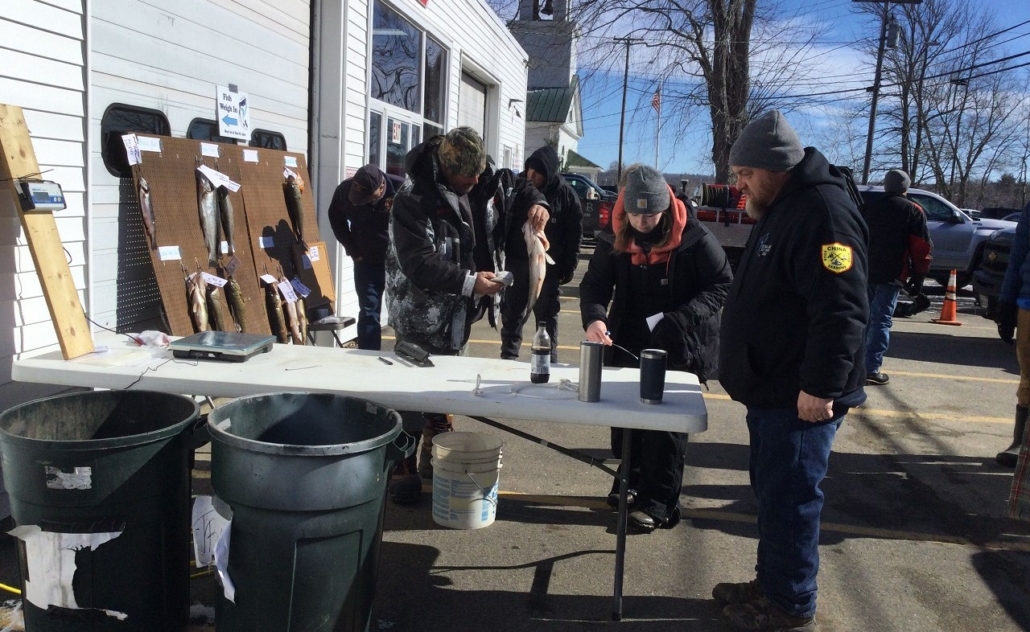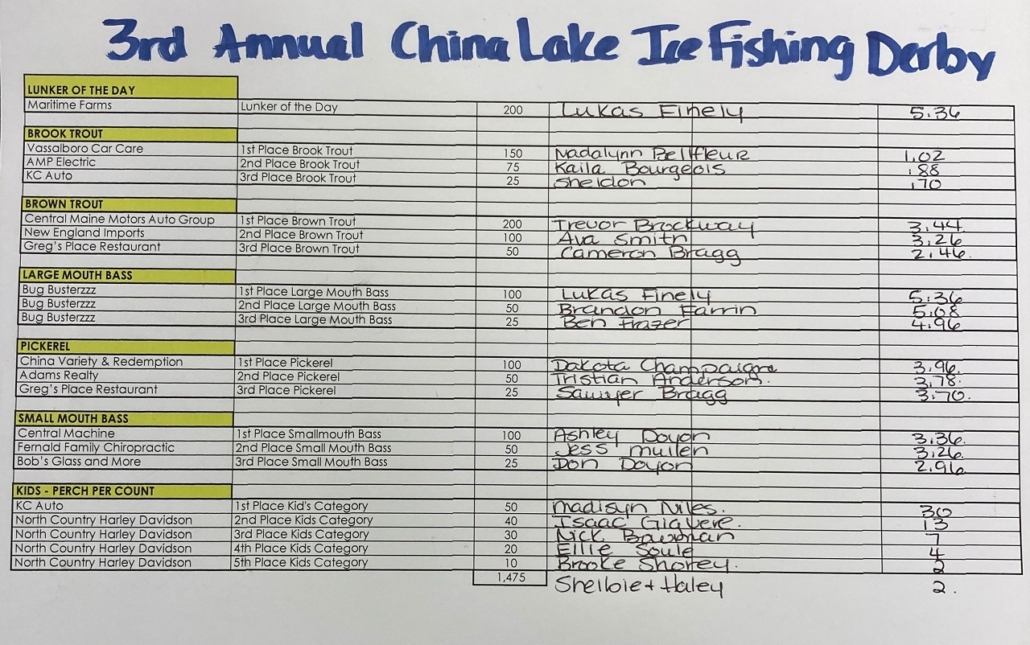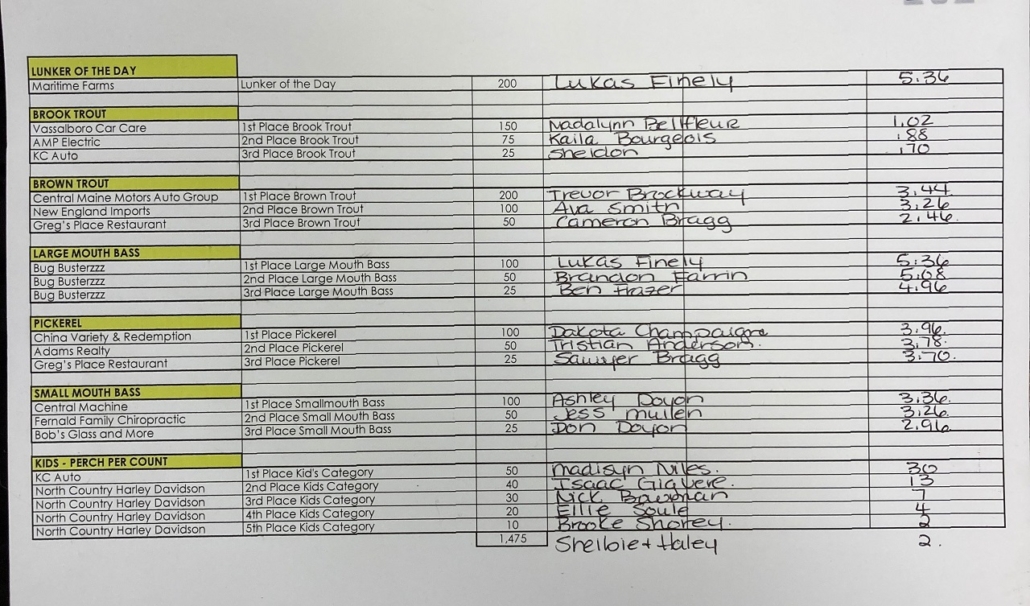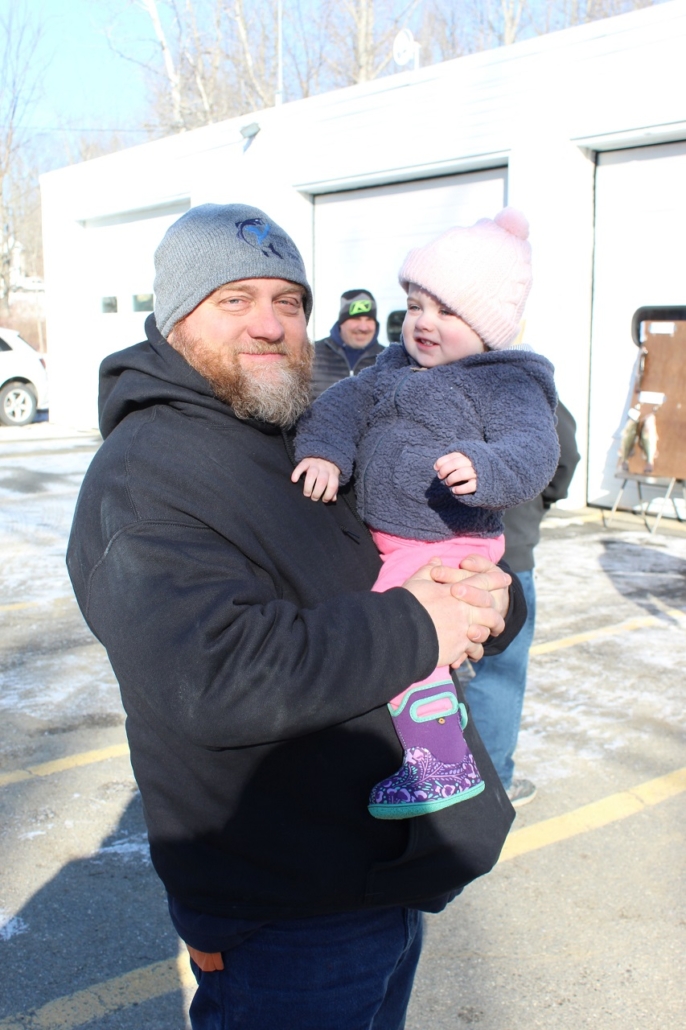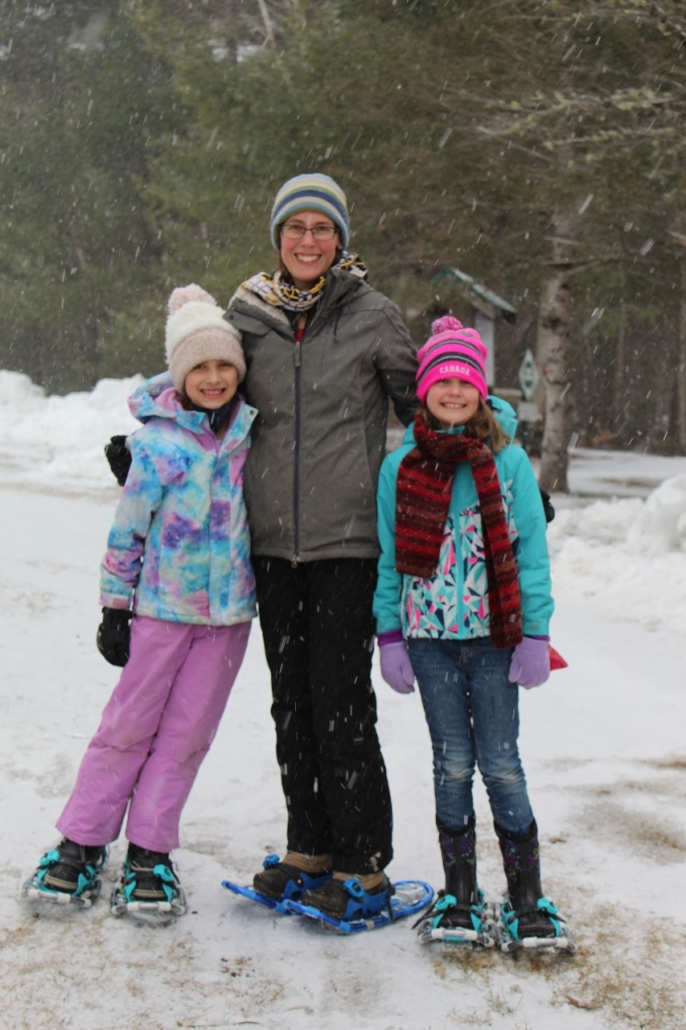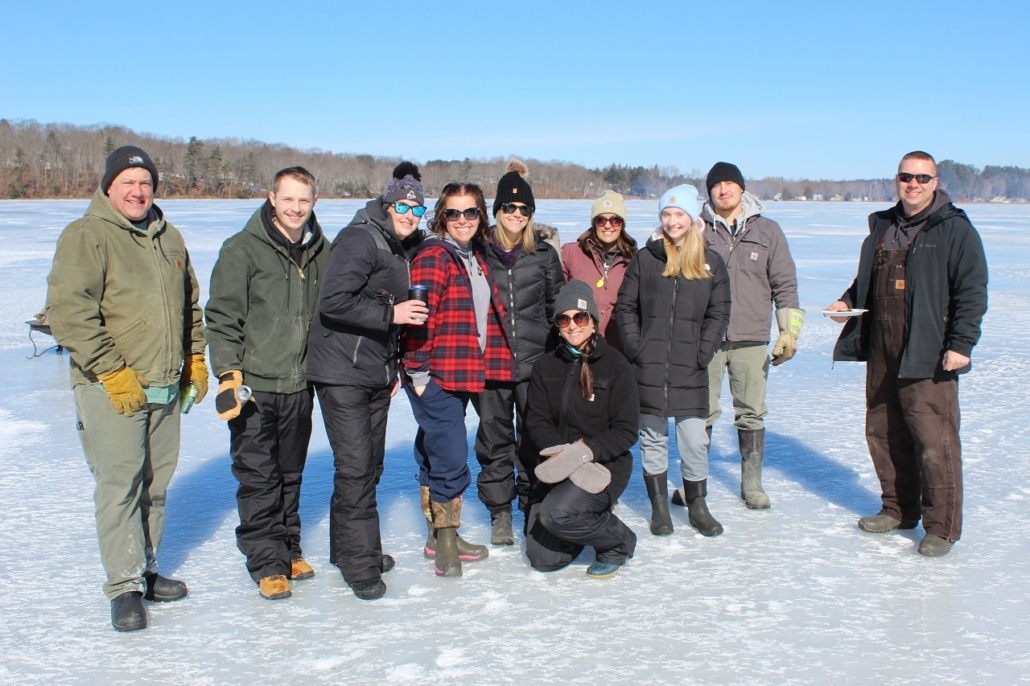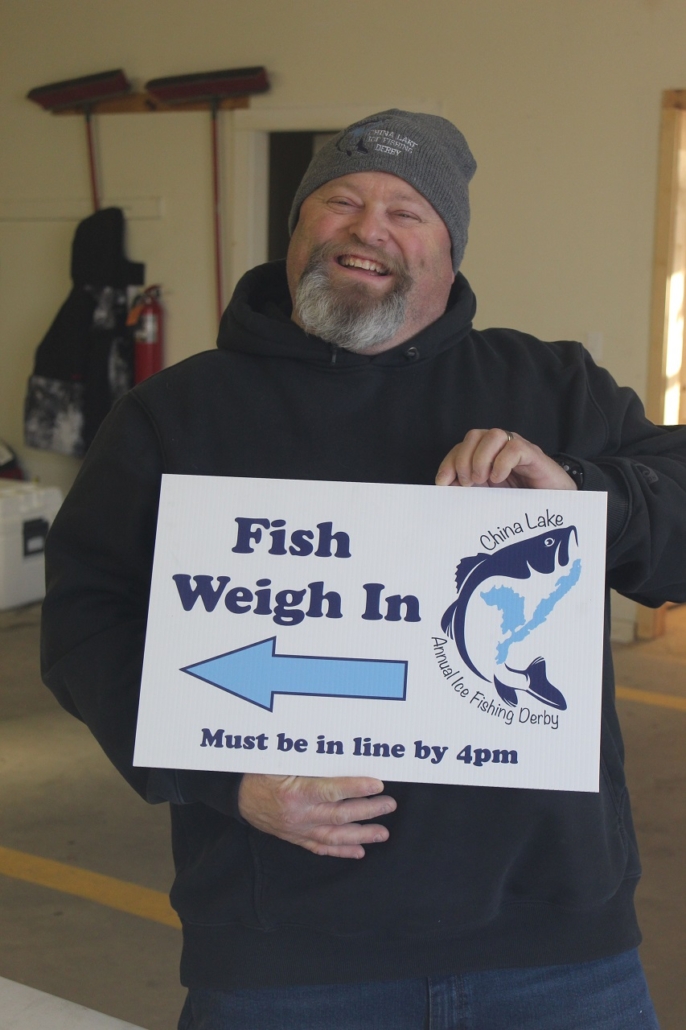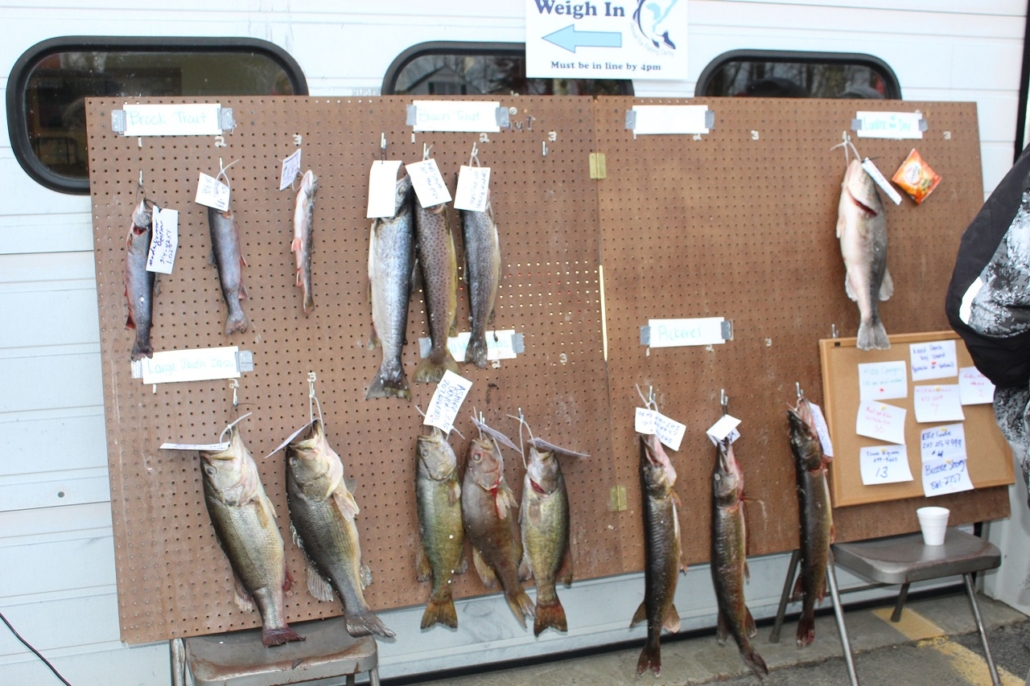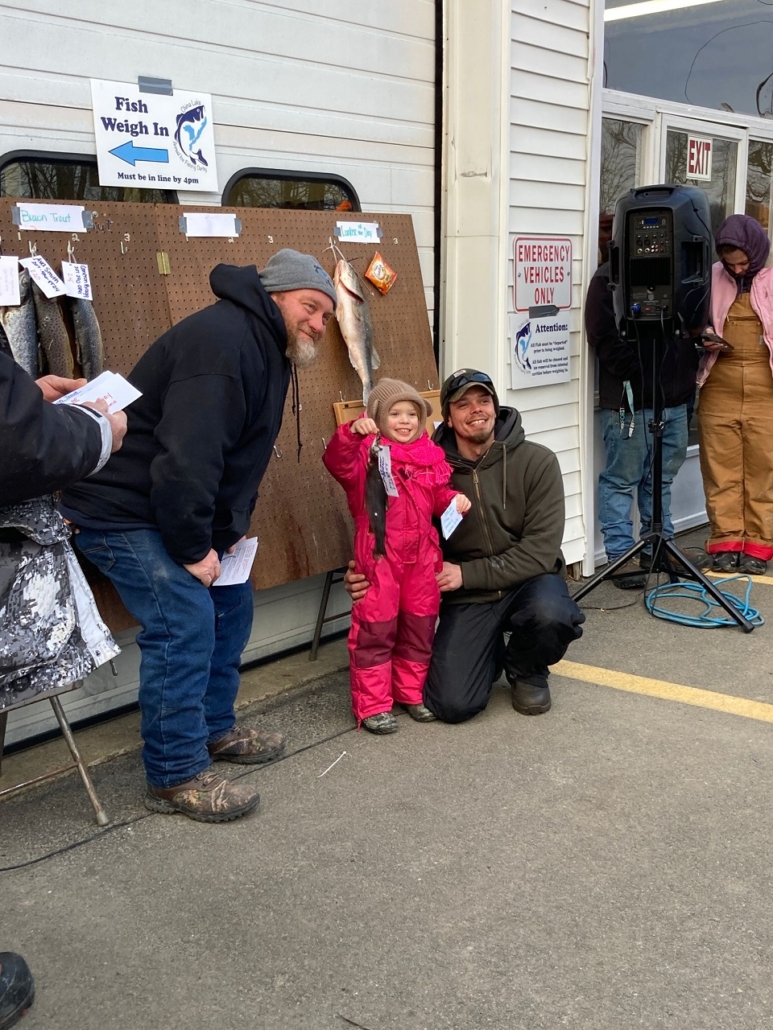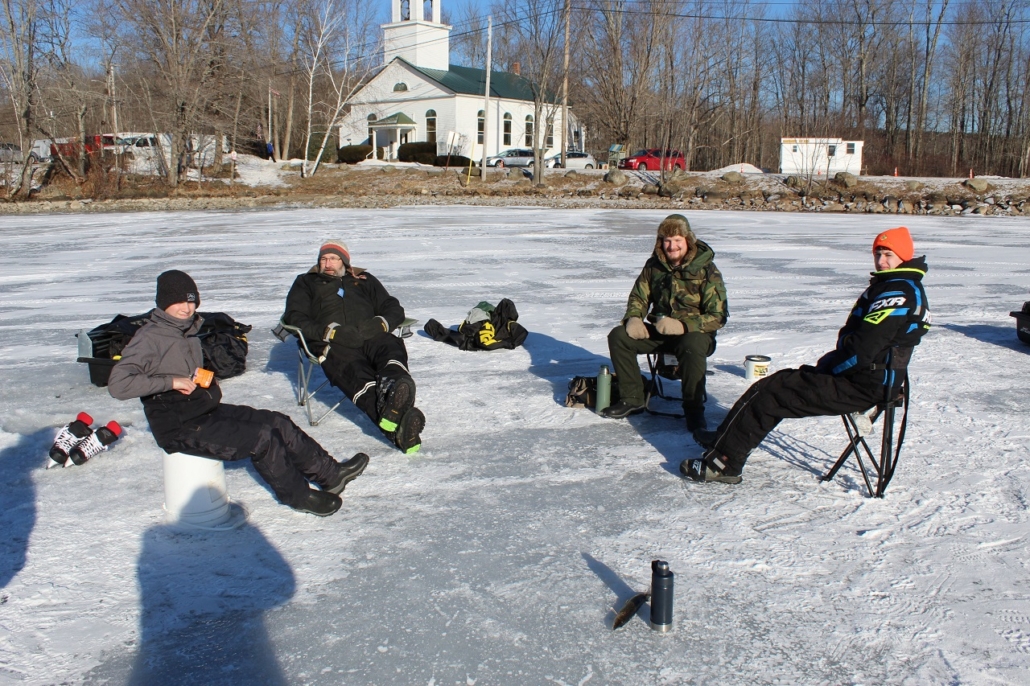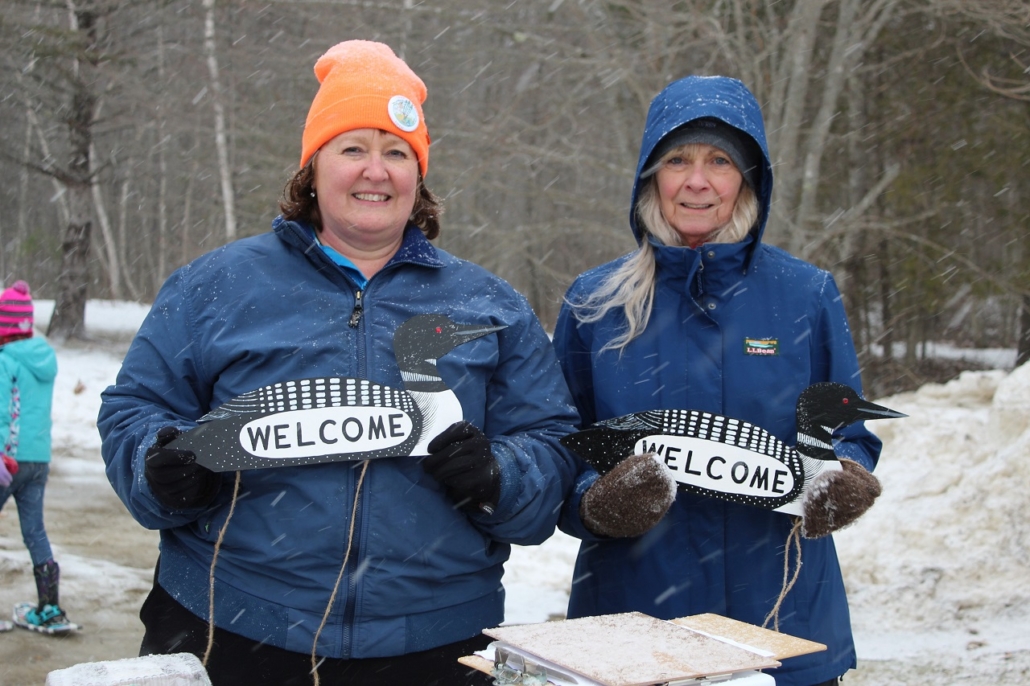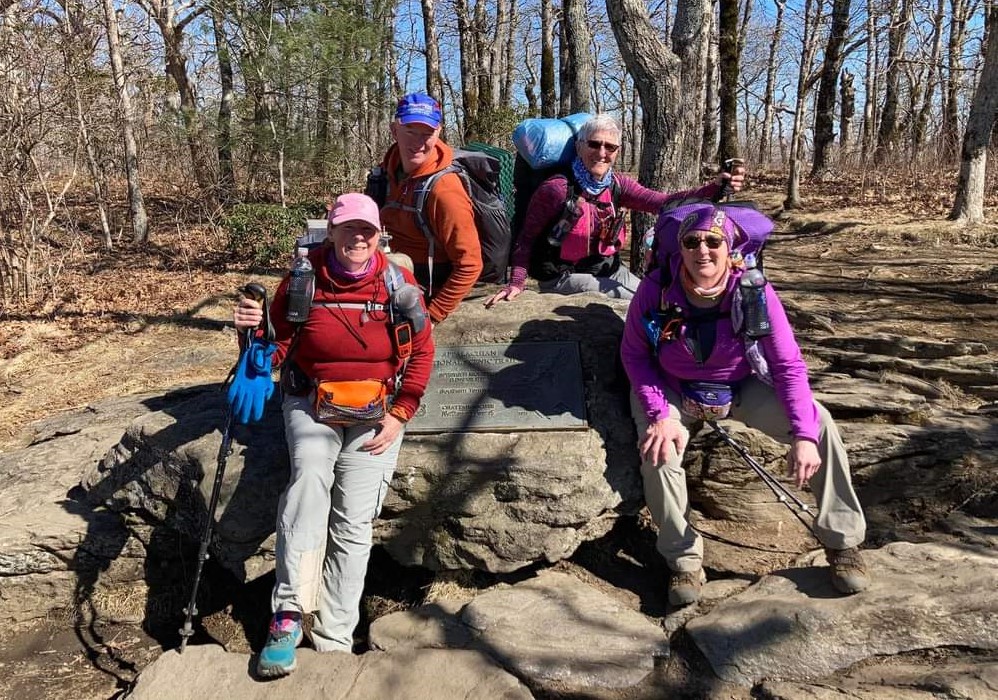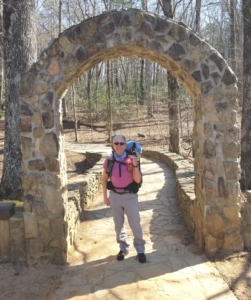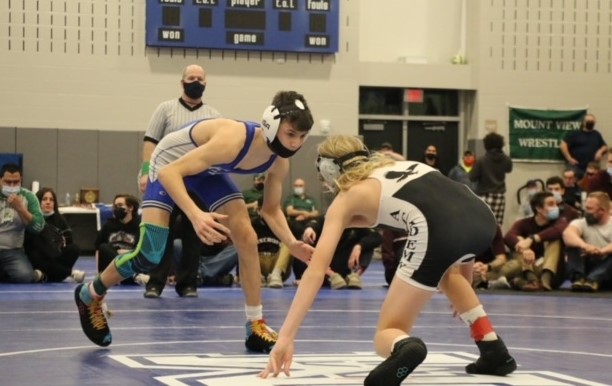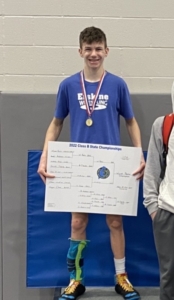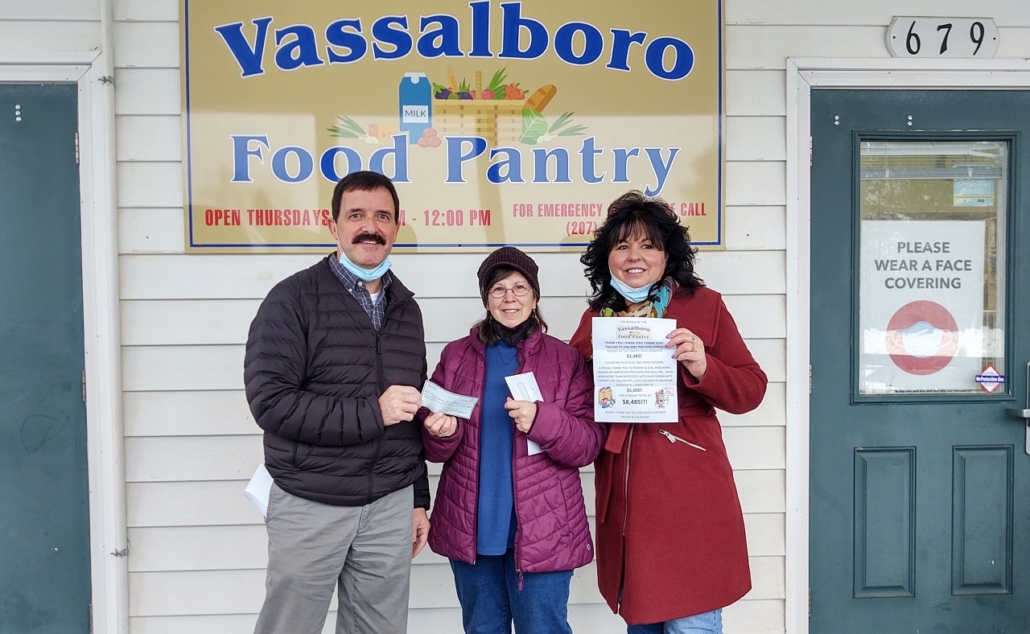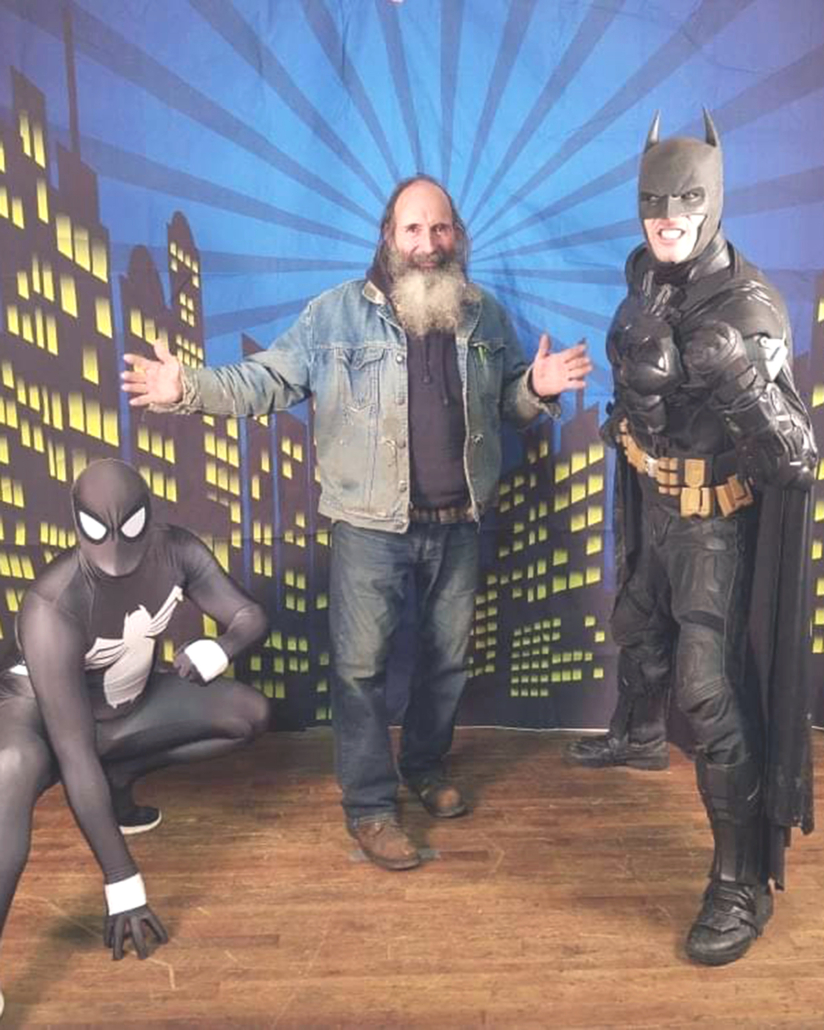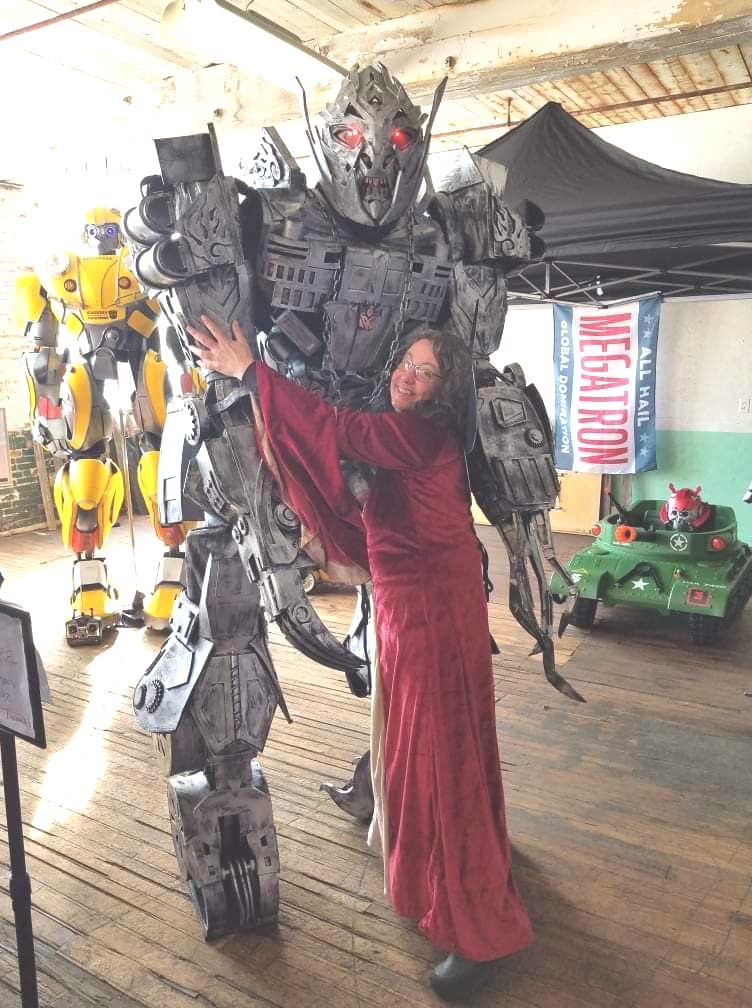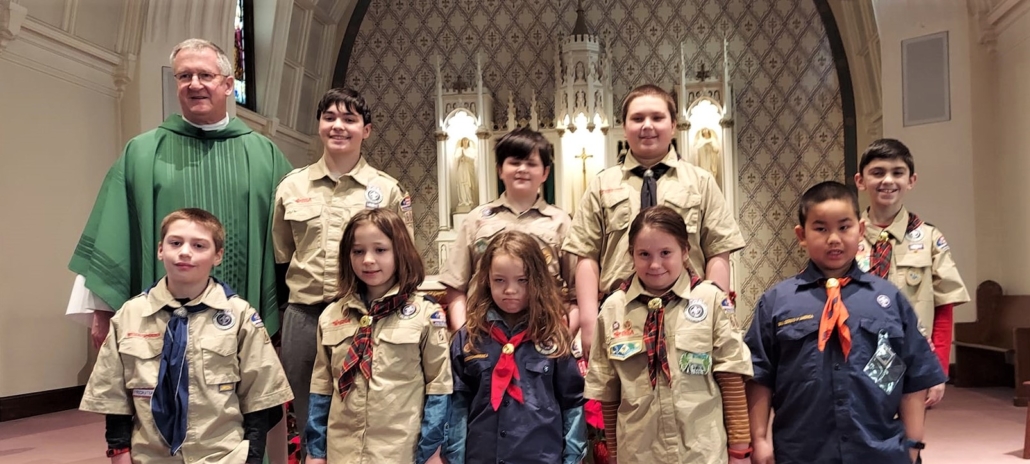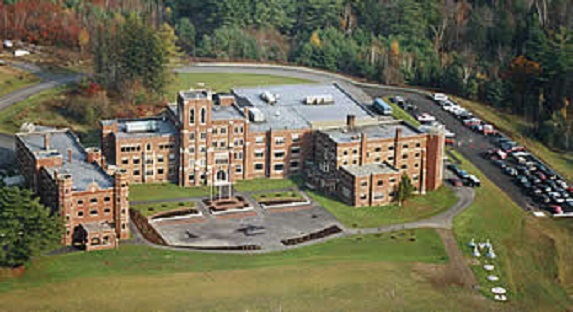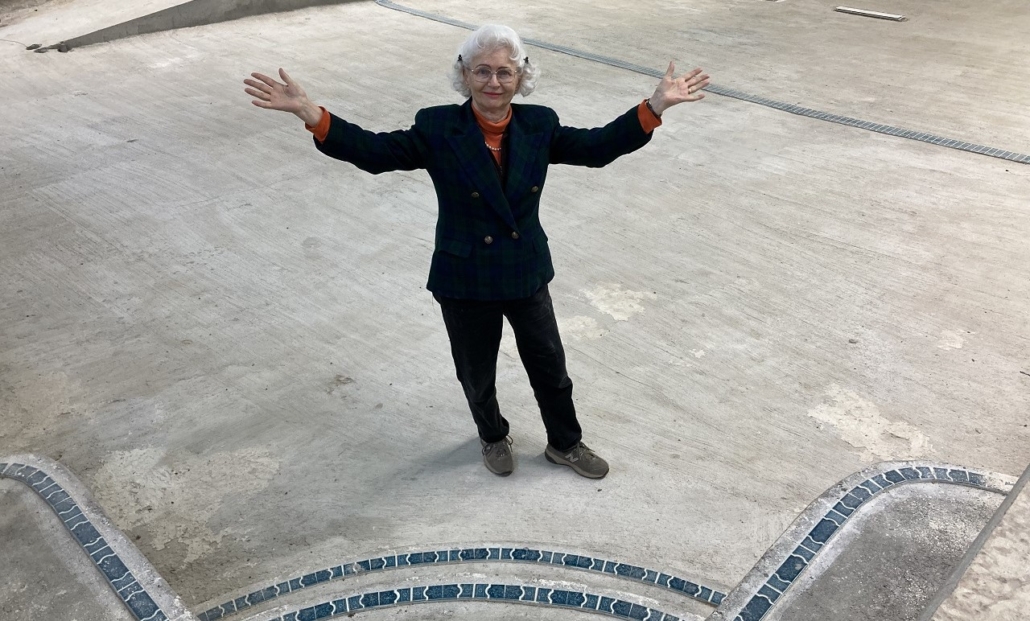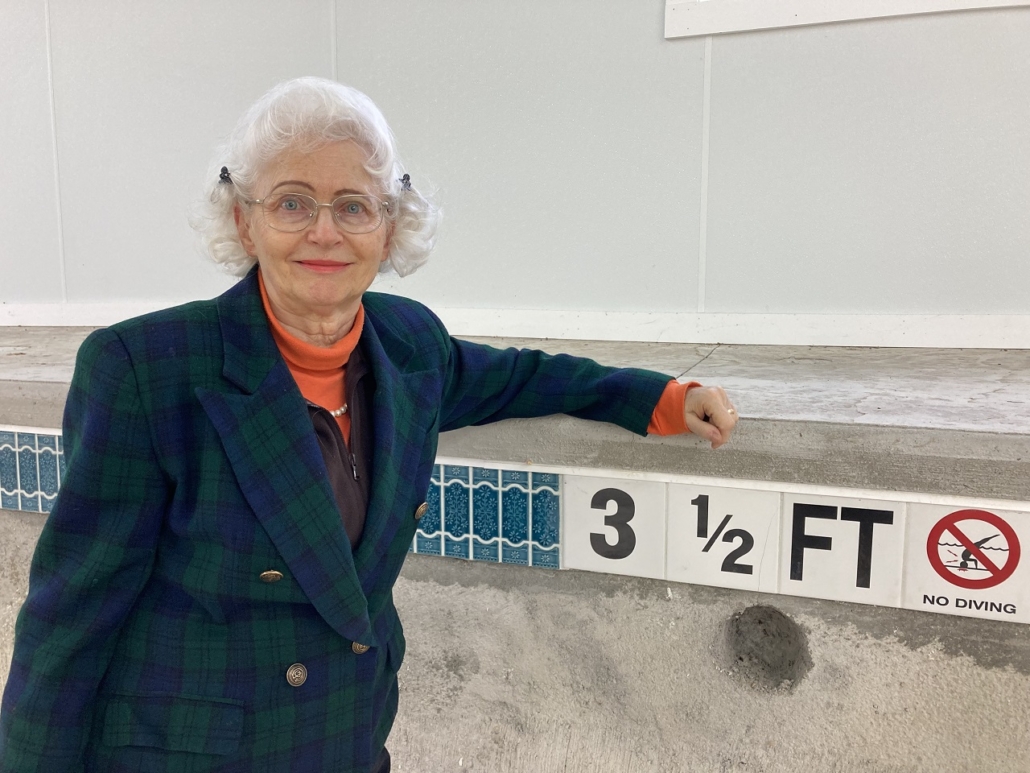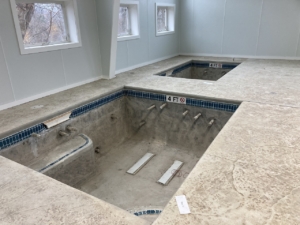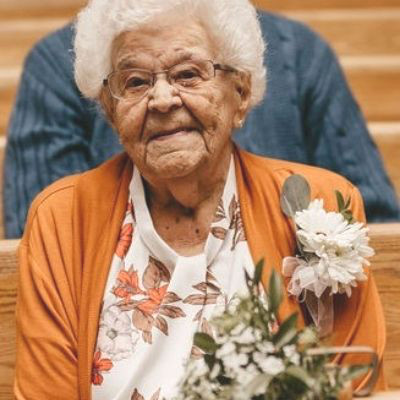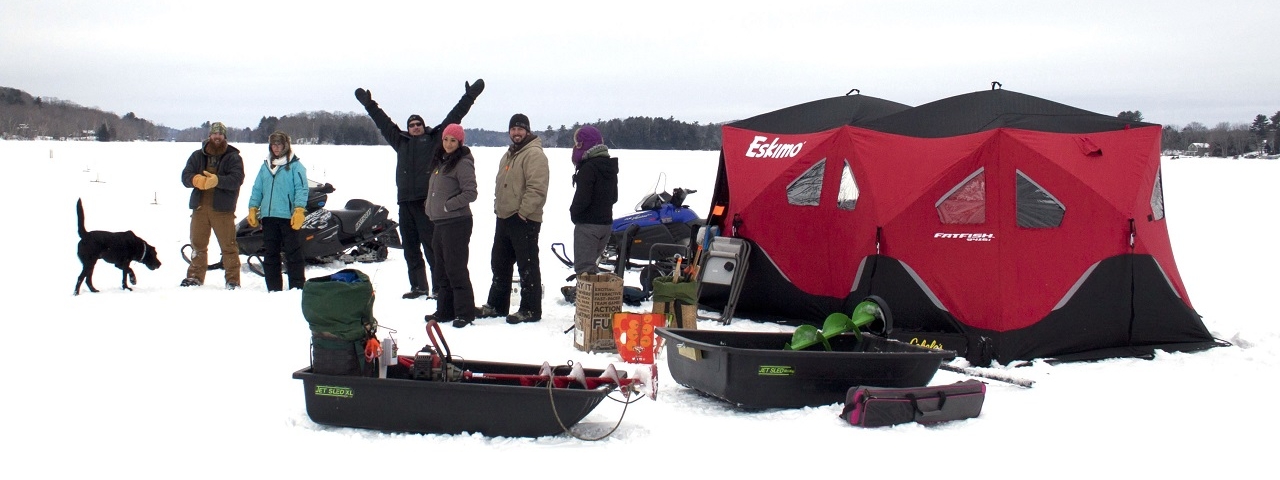
Folks enjoying last year’s event. (photo by Sandra Isaac)
February 18 – 20, 2022
When I went out to interview Tom Rumpf, president of China Four Seasons Club, I wanted to find out more about the China Lakes Ice Fishing Derby and how this event become our town’s biggest annual event so quickly? Here’s what I found out:
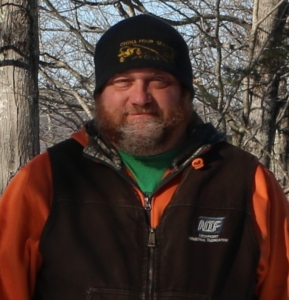
Tom Rumpf, president of China Four Seasons Club
“About three years ago–because this is the third one coming up–the four seasons club and myself got talking and we wanted to start the ice tourney back up. It hadn’t been run in 20 years. So we got a plan together and brought it to Tim [Fire Chief Tim Theriault] and everybody at the fire station because they are the ones that originally did this whole thing way back. They were all fully on board. So, it’s a joint venture between China’s 4 Seasons Club and the China Village Fire Department.”
Tom went on to explain they only had about two months to plan and implement the ice derby. The two organizations felt it went well and were encouraged to immediately start planning their next year’s derby for February 2021 with monthly meetings all year. Many events were closed in the summer of 2020 due to the pandemic including our town’s China Days. By the winter, it was considered safe to host outdoors events. Tom Rumpf met with Becky Hapgood, China Town Manager, to get approval to use the fireworks that were purchased for China Days for the Ice Derby. Tom felt that adding the fireworks turned the derby from a day event into a town-wide, weekend celebration, something the residents of China, Maine, needed after a tough, isolating year.
“It really hit me last year when the fireworks hit and I saw the amount of people. I hadn’t seen that many people enjoying the outdoors in, I don’t know, in 20 years on that lake.”
The 2nd annual China Lakes Ice Derby was a success in boosting residents’ spirits, bringing visitors to town and raising funds for the China’s 4 Seasons Club and the China Village Fire Department. Tom estimates between 600-800 people participated, including all ages and genders. The ticket sales raised $5,675.18, after expenses, providing China’s 4 Season Club and the China Village Fire department each with $2,837.60.
Energized by the success of the second derby, the monthly planning meetings went to work in March 2021 to turn the third derby into a weekend event including more organizations and adding more ways to enjoy the outdoors in winter. Tom brought out the oversized sheets of white paper his team used for brainstorming to show the creativity behind the scenes to include something for everyone in the next year’s derby weekend. Tom and his team went out to recruit involvement with regional businesses to donate prizes and showcase their products with demos. He also saw the potential in this winter weekend event to galvanize the town at a time when we need to get to know our neighbors better.
[See also: Annual China Lake Ice Fishing Derby to culminate weekend town-wide festivities]
“So that was the big thing to me was bringing in all the nonprofits and all the different entities in town. Bring them all together to share and a whole weekend event. I think it will bring a lot of people out around town. Winter is a hard time. We’re praying for a good weekend, obviously. We have a lot of events for everybody.
“We’re starting Friday night. The Masons are having dinner at the Masonic Hall in China. They’re putting on a lasagna dinner. They keep all the proceeds. After the dinner we’re going to do a snowmobile ride from the Masonic Hall because the trail goes right by there. Out to Tobey’s around town back here for a fire down on the shore.”
The Masonic Hall Central Lodge is asking that if you wish to attend, please send them an RSVP to centrallodge45@gmail.com and let them know how many people will be in your group.
Tickets to participate in the China Lake Ice Fishing Derby are available at China Variety and Redemption, Greg’s Restaurant, Harvest Time Bait, in Winslow, Lakeview Lumber, Maritime Farms (formally Fieldstones), North Country Harley Davidson, Tobey’s Grocery and through any member of the China Four Seasons Club or the China Village Fire Department. Tickets will also be available at tents at the entrance points to the lake in Vassalboro, China and South China.
Sandra Boyce Isaac, a member of both the China Village Fire Department and China Four Seasons Club, created a Facebook page and website for updated information on the weekend’s schedule. She plans to run a live stream of events as they happen and results of the raffle.
In keeping with Tom’s vision of an all-community winter weekend, Saturday will offer activities on and off the lake sponsored by area nonprofit organizations. All day on Saturday, there will be skating at the new rink at the China School grounds with events organized by Martha Wentworth, of the China Recreation Committee. At the skate rink, Martha also has plans for a snow sculpting contest and food vendors. At 10 a.m., on Saturday, there will be corn hole contests run by the Women’s Veterans Glamping group inside the China Four Seasons Clubhouse.
There’s plenty for kids this year as well. The China Baptist Conference Center will be the site again for the cardboard sled race and creativity contest at noon on Saturday. From 10 a.m. – 3 p.m., the Conference Center hill is open for sledding. Take a break and stop into the Conference Center from 11 a.m. – 1 p.m., for lunch donated by Big G’s Deli, of Winslow. Members from China For A Lifetime will be helping serve at this event.
What’s a winter celebration without an adventure in the woods? On Saturday starting at 2 p.m., the China School Forest and the China Lakes Association will be hosting a scavenger hunt for loons. Anita Smith, director of the China School Forest, tells us, “The trails are a great asset to our town because almost everyone can enjoy them. At the event, we will have extra child and adult snowshoes for people to borrow if they don’t have their own. This gives people a chance to try a new winter activity.” If no snow is on the trail this weekend, this event will continue on as planned as a hike.
Elaine Philbrook, who helped to organize the loon scavenger hunt, feels that “this is an opportunity for the China Lake Association to build connections with other organizations in the community. I hope this is just the beginning of our connections and maybe start a trend where groups in China work together on other projects. Working together seems to have worked out well for the Four Seasons Club and the Fire Department and it is working out well for the China School Forest and China Lake Association.”
Sunday, February 20, is the day of the fishing derby beginning before the first lights of dawn at 5 a.m. The kids can pick up buckets donated by Bar Harbor Bank and Trust at the China Village Fire Department. There are only 50 buckets, so the first kids to arrive, get them.
For those kids who do not know how to ice fish, Central Church will have members located by The Landing ready to help kids get started. Tom said, “They’ll be teaching kids to fish. So if your kid does not have traps or you don’t have any idea of how to fish, you go see them and they’re gonna set you up.”
When the adults need to take a break from fishing, two regional businesses, Central Maine Powersports and North Country Harley-Davidson, will be on hand with product displays. Tom was quick to point out, “Craig Anderson, from Central Maine Powersports, lives right here in China.”
Tom reminds us, “You have to bring your fish before 4 p.m., hopefully well before because we’re gonna be weighing the fish and counting the perch for the kids category. The tickets stop selling at noon time because at 1 o’clock we will start drawing door prizes. It’s gonna be Facebook live, so if you win, you can just come down and pick up your prize.”
At 6 p.m., on Sunday, the all-community, winter weekend celebration of the China Lake Ice Fishing Derby concludes with the spectacle of fireworks at the head of the lake. This will be the same sight that impressed Tom Rumpf by seeing so many people out enjoying the winter and encouraged him and his team to expand the event to more groups, businesses and ages.
Schedule of Events
Friday Night:
Mason Lodge Lasagna Dinner: at 6 p.m., at the Lodge, located at 50 Main Street, in China Village. Dinners will be $15 and dinners for children under 12 will be $5. Seating will be limited to the first 100 people.
In order to plan for the event, Central Lodge is asking that if you wish to attend, please send them an RSVP to centrallodge45@gmail.com and let them know how many people will be in your group.
Following the Mason’s dinner, there will be a Guided Nighttime Snowmobile Trail Ride finishing up with a bon fire at the China Four Season Club Beach.
Saturday:
All Day: Ice skating with a food truck on site selling refreshments presented by the China Recreational Committee.
All Day: Central Maine Power Sport Set-up and Demonstrations by the China Four Seasons Clubhouse.
10 a.m.: Cornhole Games at The China Four Seasons Clubhouse. Food and drinks will also be available for purchase. The event will be presented by (and all proceeds going to) Women Veterans Glamping.
10 a.m. – 3 p.m.: Sledding at the China Conference Center.
11 a.m. – 1 p.m.: Lunch at the China Conference Center with all of the food donated by Big G’s Deli, in Winslow.
Noon: Cardboard Box Sledding Race at the China Conference Center
2 p.m.: Snow Shoeing (or hiking if there is no snow) and Scavenger Hunt presented by the China Lake Association and the China School Forest.
Sunday:
5 a.m. – 4 p.m.: China Lake Ice Fishing Derby!
5 p.m.: Ice Fishing Derby Awards Ceremony
6 p.m.: Fireworks Display over China Lake.


